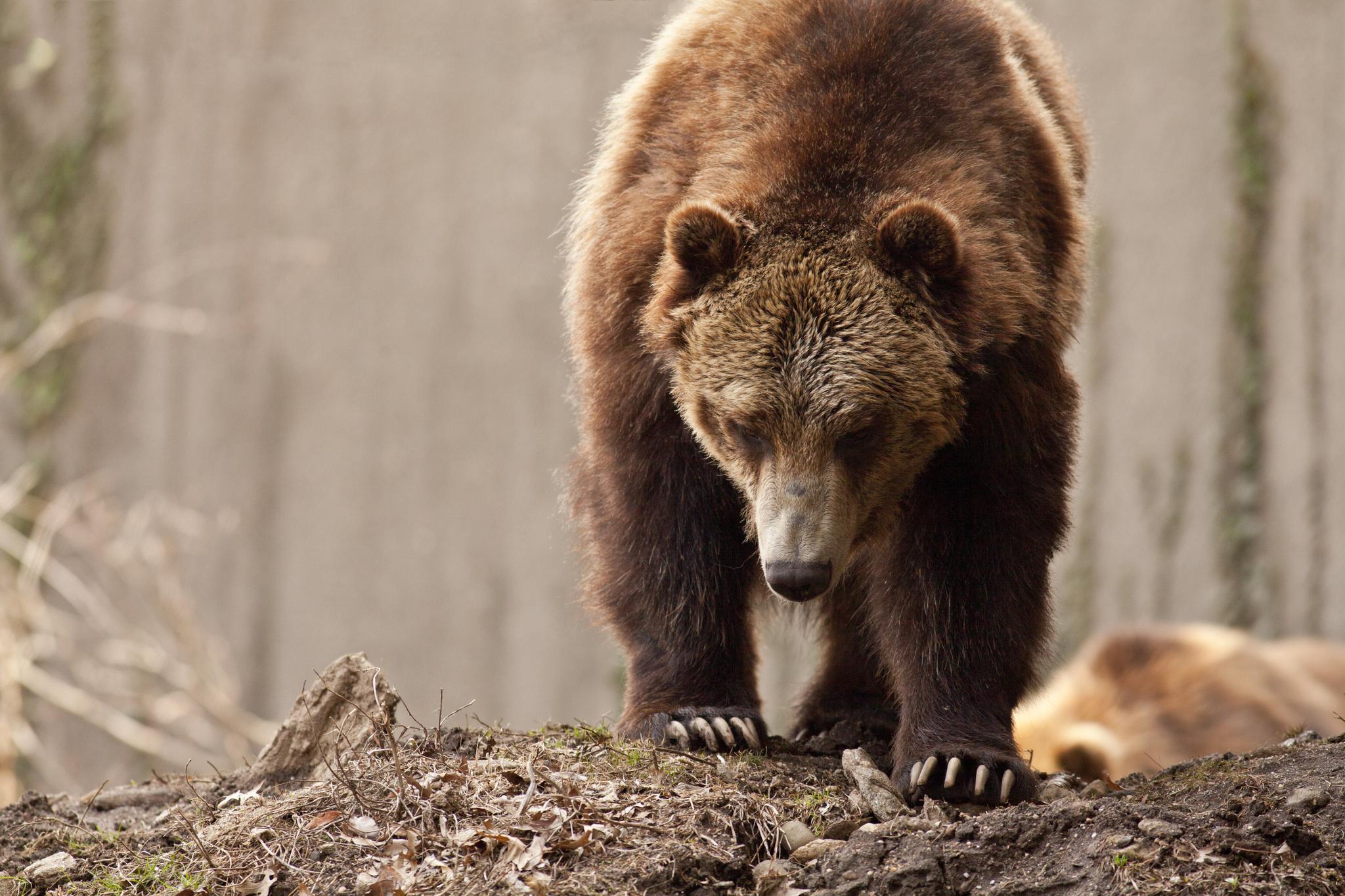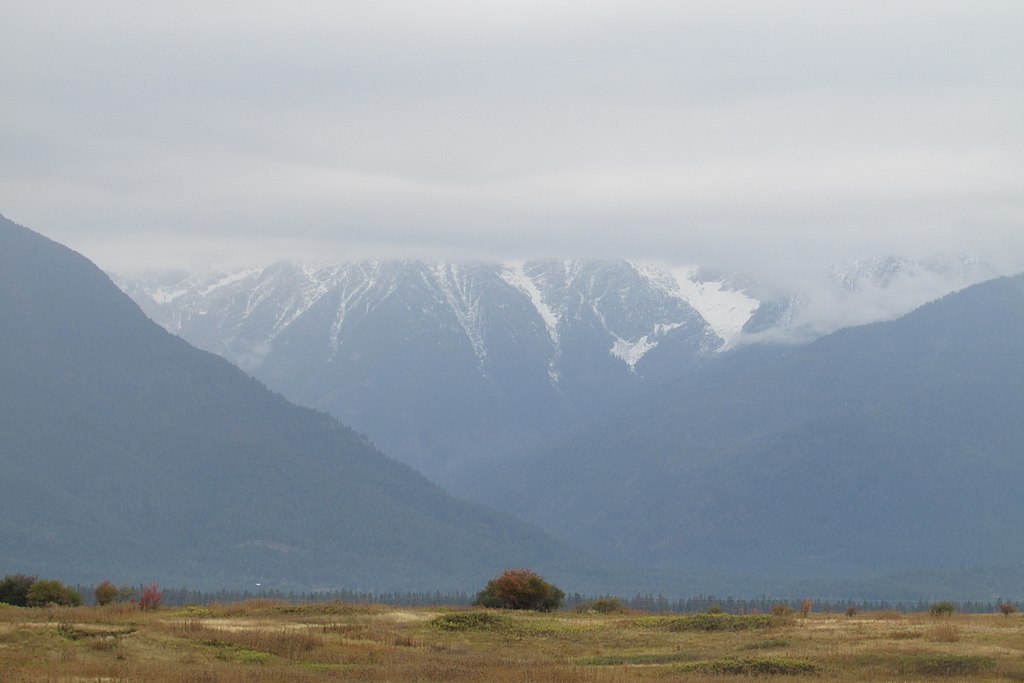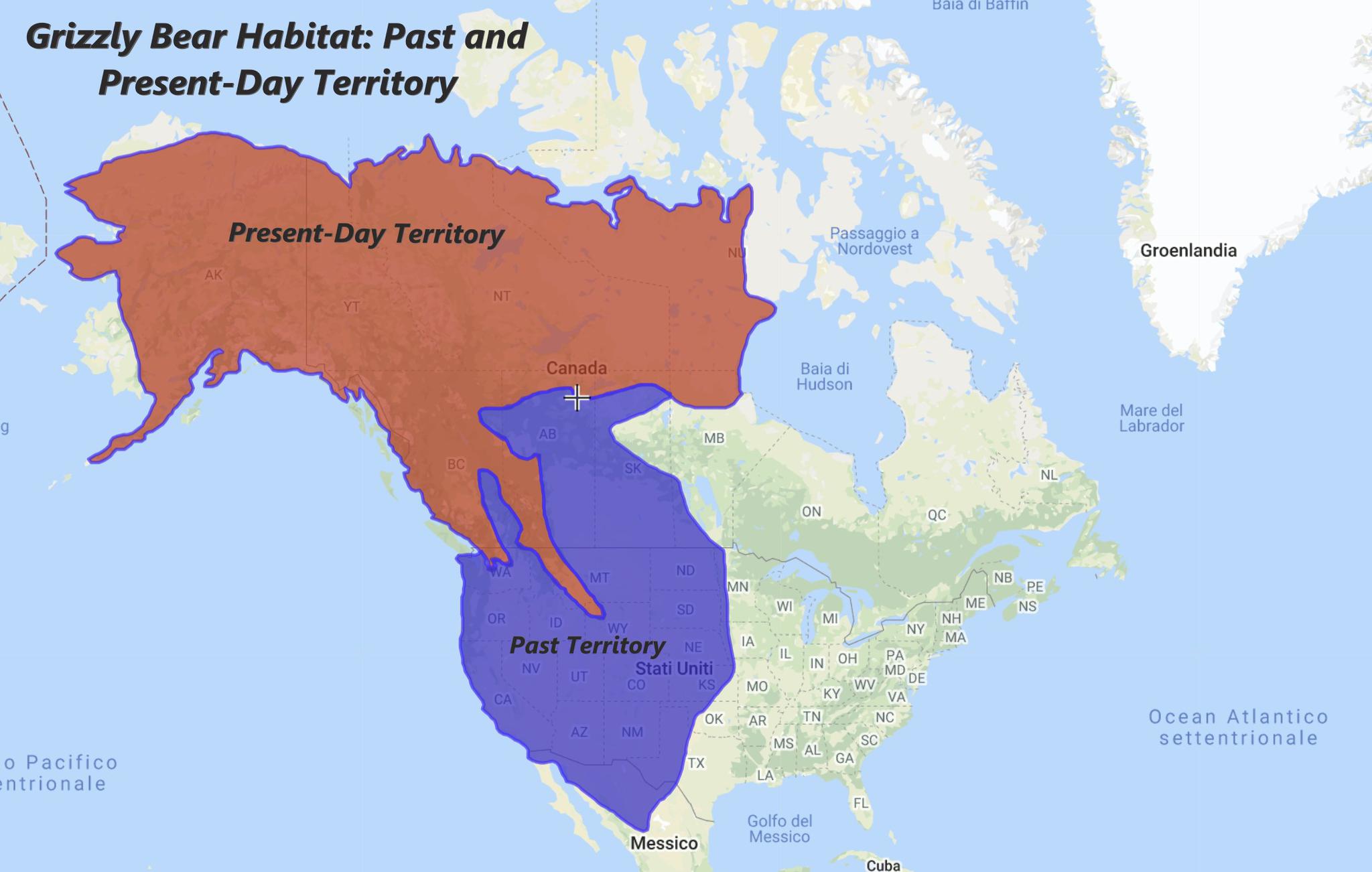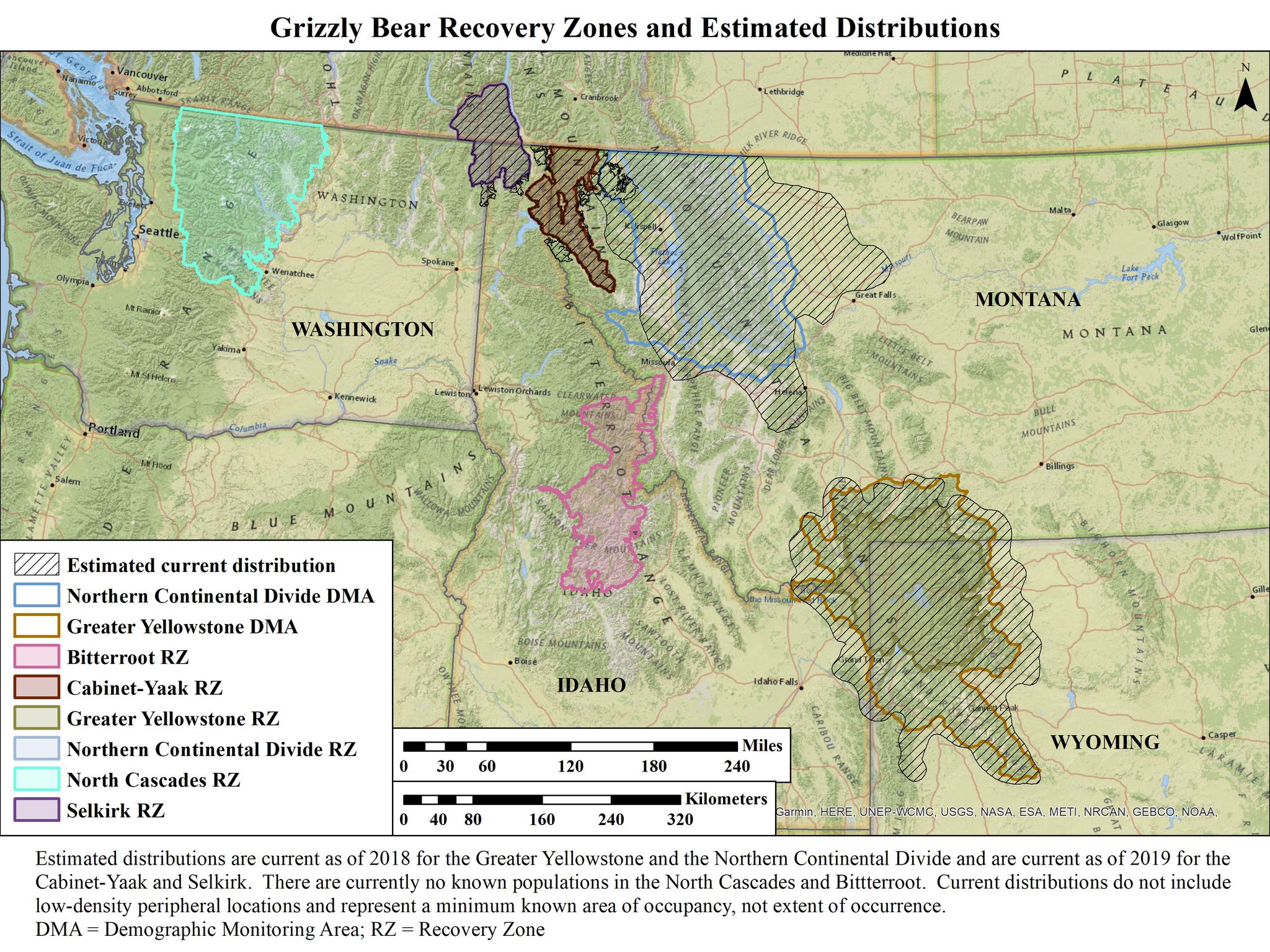Habituated to human food rewards
Habituated to human food rewards
The Ninemile Grizzly Saga
By Sofia Solovieva, SPbU Biologist

Photo: A Grizzly Bear (Ursus arctos horribilis)
Premise: This is a short article I wrote some years ago but I revised it and I decided to post it here because it's still actual and meaningful. Enjoy!
Introduction
This story tells of a young brown bear, called Ninemile Grizzly, capable of doing something no other grizzly had never been able to do while acting in the worst way possible to have a chance to survive in a world “dominated” by Homo sapiens.
This story tells of food-conditioned bears and human bad habits/education regarding prevention on living peacefully in a territory inhabited by large carnivores.
This is a fascinating story that narrates the state of grizzly bears in modern America and shows hints of their future (if they have one).
It could seem unusual but the Ninemile Grizzly saga it is linked with a fire, morel mushrooms and migrant workers.
Morels, pickers and bears
In 2000, the slopes of Sleeping Woman Mountain (called Squaw Peak at that time) in Montana were scorched by a fire that burnt the trees and created the ideal conditions for the growth of the so called fire-following vegetation, including mushrooms. A year later, the morels began to appear and fill the mountainsides.
The morel mushrooms only grown in the wild and you won’t probably find them in the grocery stores. Their shapes and colors are various and range from oblong to bulbous and from blonde to grey. Even if they have a counterpart (called false morel) that is poisonous, they are easy to distinguish because exteriorly they look like a honeycomb and their inside is white and hollow. Each spring, hordes of mushrooms pickers hit the mountains and wooded areas to hunt these elusive fungi, there is an important commercial market for morels, restaurants and chefs crave them, they are top-tier mushrooms and their depth and earthy flavor is considered delicious.
In 2001, two hundred mushroom hunters starting to “invade” the slopes of Sleeping Woman Mountain parking their vans and setting up tents. Most of them were migrant workers, their makeshift camps had no toilets and the garbage was left unattended outside.
The rangers of the USDA Forest Service (FS) at the Ninemile Ranger Station had the task to manage that area and to handle the necessary permits to pick the morels. The mushroom hunters had to exhibit a camping permit and a commercial use permit, the provisions about food and garbage were clear but constantly ignored. There were eight camps that contained roughly 30 people per camp and, when the rangers decided to intervene, it was too late.
Ken Britton, a Ninemile ranger, said that after a week they started to put toilets, collect the garbage and talked to the pickers to convince them to store the food in their cars.
“After that, it wasn’t a problem”, said Britton.
But “losing the stable door after the horse has bolted” has always been a useless exercise.
“I guess we were caught a little off guard because this hadn’t been a problem before”, Ken Britton continued, “we didn’t know what to expect. We didn’t know how many mushroom pickers were coming, and we got a lot more than anticipated. Initially they didn’t store their food or handle their garbage well…”
The powerful sense of smell guided black bears to the camps and they fed on trash and leftovers scattered all around the tents. Among these plantigrades there was a 170 kg (375-pound) subadult grizzly bear that foraged on camp garbage for days,becoming “habituated to human food.” This young specimen would soon become very popular and known as the Ninemile Grizzly.
He was probably one of the two cubs that followed a female grizzly observed several times by Flathead Reservation wildlife officials in 1998. Two or three year before, in 1995 or 1996, she decided to leave the Mission Mountains in Montana (prime grizzly bear habitat) to reach the Valley Creek and then the Sleeping Woman Mountain. It’s not clear the reason why she did it, she said goodbye to a safer place to start a dangerous trip that probably led her down the slopes of Mission Mountains and then, following the Camas Creek, across the U.S. 93 to the Flathead Indian Reservation and the Jocko Mountains (that include the Sleeping Woman Mountain). Grizzlies are often spot roaming the Rattlesnake National Recreation Area (that is located south of the Missions) and they usually go there travelling over the Pitsel Range and across the U.S. 93. Anyway, if a bear wanted to reach the Bitterroots, it should overcome a massive and almost impassable barrier: the I-90 (Interstate 90).">
Map: Ninemile's Mother probable Route from Mission Mountains to Valley Creek

Photo: Mission Mountains, MT. Credit: Chris Light, CC BY-SA 4.0
Delisting needs the Bitterroots
Ursus arctos horribilis (the scientific name of the grizzly), occupies today only a small percentage (approximately 2%) of its former habitat south of Canada. The largest populations are located inside the national parks: Glacier, Yellowstone and Grand Teton National Park. The grizzly is also present in the Canadian Rocky Mountains parks such as Jasper, Yoho, Banff, Kootenay and Waterton Lakes. The Bitterroots Ecosystem is a large area which lies between the main concentrations of grizzly bears, it’s not inhabited by Ursus arctos horribilis yet but, if it were, it would be of paramount importance for the complete recovery of the grizzly in modern America. The great bear is listed as a threatened species since 1975, in the lower-48 states it is illegal to harm or kill these bears (except for self defense or in case of the defense of other people) and, when the U.S. Fish and Wildlife Service (FWS) granted the protection for this subspecies, they compiled the so called Grizzly Bear Recovery Plan which identified six ecosystems that were suitable to grant a future to this grizzled plantigrade.
The recovery ecosystems are:
- The Greater Yellowstone Ecosystem
- The Northern Continental Divide Ecosystem
- The Cabinet-Yaak Ecosystem
- The Selkirk Ecosystem
- The North Cascades Ecosystem
- The Bitterroot Ecosystem
With 15 million acres of perfect grizzly habitat, the Bitterroot Ecosystem, if occupied by these brown bears, would probably allow the overall population to expand to the point where it could be considered the possibility to delist and remove Ursus arctos horribilis from the protection of the Endangered Species Act (ESA).
In my opinion, no Bitteroots no delisting.

Map: Grizzly Bear Habitat Past and Present-Day

Map: Grizzly Bear Recovery Zones and Distributions - Credit: U.S. Fish and Wildlife Service
The Ninemile Grizzly saga begins…
Even if the Valley Creek was less secure than her former home, the female grizzly found love there and, in 1998, she was spotted with two cubs. One of them was our star: the Ninemile Grizzly.
Until 2001, the young bear followed his mother, she taught him everything she knew and he probably behaved like a good guy eating natural and healthy food. At the age of three, he found himself alone, the mother had booted him out and, starting from that point, he relied on his own strength alone. Unfortunately, he got addicted to the worst “bear drugs” that we call garbage and it happened at the mushrooms pickers’ camps stretched out on the slopes of Sleeping Woman Mountain.
Dave Murray’s house is built at the confluence of three creeks: Ninemile, McCormick and Fire. He was with his wife when the motion detector signaled a presence.
“It was a bear,” he said, “and it was looking in our son’s window.”
The bear left running when Murray yelled but it came back the next morning, jumped on a pickup truck and fed on the garbage that Murray had left into the back of his vehicle. Dave Murray and his wife saw bears almost every day but this time was different, this time the bear was a grizzly.
Jamie Jonkel, a bear biologist for the Montana Department of Fish, Wildlife & Parks (MDFWP) decided to set a culvert trap and instructed the game wardens to proceed. The bear came back to Murray’s home after five days, got caught, radio collared and then released on the Reservation Divide near the headwaters of Ninemile Creek. The wardens shot cracker shells at the grizzly to reinforce the message: behave like a good bear, stay wild and don’t come back.
Four days later, our Ninemile Grizzly reached Ravalli, a small town on U.S. 93, he found the poultry that Shawn Andros held in a henhouse and killed thirty chickens, three ducks, a goose and a peacock. Mister Andros saw the mess and blamed his dogs but then he saw a bear in the brush, yelled at him two times because the animal didn’t leave at first but then it walked off. The Flathead Indian Reservation wardens thought it was a black bear and gave Andros some rubber bullets telling him to use them next time. The Ninemile Grizzly returned the following evening, Shawn Andros caught him, shot the rubber bullets and took a video.
When Jonkel and Chris Servheen (Interagency Grizzly Bear Committee (IGBC) coordinator) visioned it, they identified the bear as a subadult grizzly and at that point they knew they had a problem.
“He just seemed to find every attraction available…”
The Ninemile is a breathtaking valley dotted with scenic streams, majestic mountain peaks and now even with trailers, cabins and retirement homes. In the past, only a few striking ranches were present and the place was really wild and remote. Black bears have always frequented the area and, due to the increase of the number of rural residences, there are now more and more people that find bears in their back yard. These residents were used to come face to face with Ursus americanus but this time they had a grizzly to confront with, things were different and more complicated.
The Ninemile Grizzly started to move erratically, searching continuously for new sources of food: garbage, bird feeders, dog food, chickens, cattle carcasses, compost piles. He moved west from Ravalli and came back to the Ninemile Valley, raiding everything he could eat. The FWP wardens tried to catch him and fired cracker shells at him but the bear learnt to avoid the culvert traps and the gun-wielding officials. Biologists and rangers talked with people that lived in the area explaining them how to handle garbage, compost piles and everything that could become “bear food.”
Bill Thomas, an FWP information officer, said: “We found some horrendous examples of human-related food rewards, there were truckloads of kitchen garbage at some residences.”
They spent two weeks trying to explain what to do to remove every food attractants, they held two meetings and even went door-to-door to talk with everyone. Many residents were open-minded and ready to change the way they managed garbage and the other attractants but there were a lot of people that simply didn’t care and the young grizzly continued to get more food rewards.
Wardens, biologists and volunteers didn’t stop to try to dissuade the bear (to whom they gave the name of Ninemile Grizzly) with cracker shells, rubber bullets and everything they had.
“We tried everything, but the bear just seemed to find every attraction available.” Bill Thomas declared.
“I shot cracker shells at him, and he’d run off, but not like you’d expect a bear to do. He traveled day and night,” told Heather Marstall of the Wind River Bear Institute.
The Ninemile Grizzly was used to walk into enclosed porches to find pet food and he did it again on June 30. This time, a woman was there watching TV and, even if the bear didn’t charged her, the IGBC decided that he had gone too far.
And then the incredible happened
Even if the young bear was radio-collared and the wardens could track and follow his movements, he knew tricks and he had learnt to stay away from traps and people with guns. He went down toward the I-90, came back to the Ninemile Valley and the, on July 1, he did something that it would have marked a milestone for the Ursus arctos horribilis subspecies: he swam across the Clark Fork River and crossed the I-90 (Interstate 90) moving towards the Bitteroots Mountains.
Biologists, naturalists and environmentalists had always hoped to observe a grizzly doing what the young Ninemile had just accomplished. Despite his misdeeds, this subadult bear was suddenly become the main character of a dream come true, crossing the I-90 to reach the Bitteroots was like the first step on the Moon and Ninemile was the ursine version of Neil Armstrong. But could our “bad guy” continue to move south and then be the first specimen of a new grizzly population in the Bitterroots? Obviously not.
He just looked for a chicken coop to raid and then he went north, crossed the river and the Interstate again and traveled towards Superior. Here, his saga came abruptly to an end. Wardens that were tracking the radio-collar signal caught up with and shot…
Map: "The Ninemile Journey"
Ninemile is not an unicum because problematic and habituated bears are not so rare and they will probably increase. If we take a look at western Montana, for example, we can now see rural communities that took the place of remote and isolate cabins and outposts. That means more men but also more bears because grizzly populations from the Greater Yellowstone Ecosystem are expanding towards those territories. It’s essential that people learnt how to live with the grizzly, the big bear. When they built their homes, Ursus arctos horribilis wasn’t there, but now it’s coming and those place have to be regarded as grizzly country. Learning how to handle and store food and trash it’s fundamental because it prevents that bears got hooked on garbage and, eventually, killed. This subspecies may never recover if too many specimens will have to be removed due of conflicts with human beings. Experts like Jamie Jonkel are working with Ninemile’s residents teaching them how to behave, handing out brochures and trying to build a “bear awareness.” A state law prohibits to leave bear attractants unattended but Jonkel is right: if people understand the importance of doing something everyday to protect and preserve wildlife maybe, one day, other grizzly bears, following Ninemile’s footprints, will reach the Bitterroots and hopefully they will stay there to establish a new population.
Jamie Jonkel said that he personally observed “..the Ninemile Grizzly crossing under the I-90 bridge. Since 2001, we’ve had multiple verified grizzlies using this same area to cross the river.”
It's probable that, after Ninemile, other bears moved towards the Bitterroots but biologists don't think that the area hosts a resident grizzly population.
Living with bears
Living with bears is not simple but it’s possible. Each person must do his/her part trying to follow simple guidelines to avoid attracting bears.
A lot of black and grizzly bears become habituated to garbage and that’s a way that often leads to death. People that live in a “bear country” should store garbage inside a building or, even better, in bear-proof containers and then send it to a disposal site as soon as possible. Electric fences are one of the most effective deterrents to protect orchards, gardens, compost piles, beehives and livestock. It is important to remember to pick all ripe fruit from trees and ground before the autumn and don’t add meat, bones and grease to compost piles. Bears eat everything and, for this reason, even pet food and bird feeders can be attractants: don’t leave the first one outside and hang feeders out of the reach of plantigrades.
Bears can kill livestock easily if the animals are not protected and a black or grizzly bear that preys on them is often removed from the population. The sense of smell of these large carnivores is extremely developed and they can sniff a livestock carcass miles away. Burying dead livestock is useless and the solution here is hauling the carcasses to a disposal site.
Bears are also very smart, sometimes is very difficult to keep them away from human food, they can be tenacious and stubborn if they find a source of food but, at the same time, they can’t waste energy and they usually don’t come back if they visit a place and didn’t find something to eat. “Habituated” bears can be dangerous and the repeated use of site is very hard to stop and it will not lead to a happy ending.
All these rules we just talked about are useful in every place that is inhabited or frequented by bears such as Montana, Kamchatka or a small Italian village in Abruzzo.
The main causes of bear mortality are linked with conflicts with human beings, it’s vital to educate people and communities to keep bears out of their food and, at the same time, explaining them the crucial role that these mammals play for an healthy ecosystem.
Saving the bear to save the man.
Bibliography and citations:
Schneider B., Where the grizzly walks: the future of the great bear, pp.19-28, Falcon Publishing, Helena MT, U.S., 2004
Devlin S., https://helenair.com/lifestyle... July 12 2001
U.S. Fish and Wildlife Service, https://www.fws.gov/mountain-p... January 19 2021
Vital Ground Foundation, https://www.vitalground.org/vi... December 14 2018
